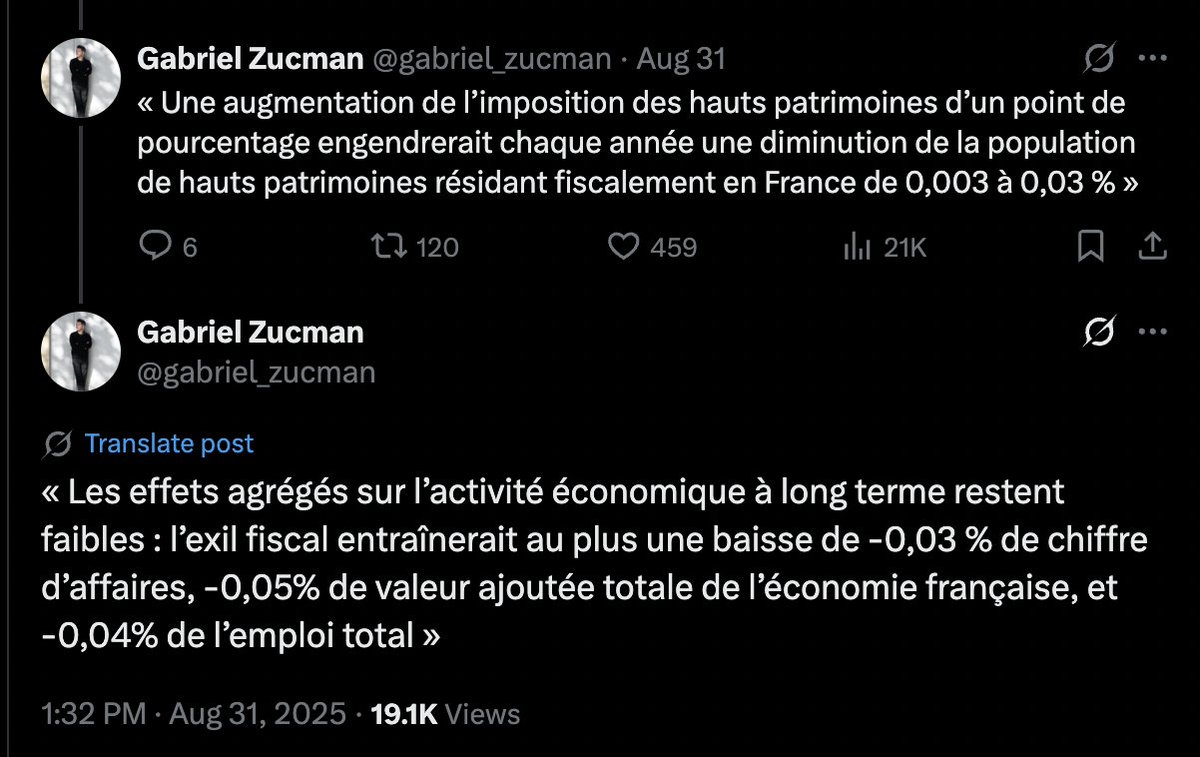This graph has been floating around every couple months, arguing that the top 10% of earners account for 50% of consumption.
Anyone familiar with economic statistics should intuitively feel it must not be right.
So I dug into it a bit, and indeed, it's (mostly) not.
Anyone familiar with economic statistics should intuitively feel it must not be right.
So I dug into it a bit, and indeed, it's (mostly) not.
https://twitter.com/MattBruenig/status/1984763620157268430
First, why does it *feel* wrong?
A. the top 10% get about 50% of *pre-tax* income
B. they get 30 to 37% of disposable income after tax&transfers (depending on source)
3. and we know the rich have a *higher* savings rate, so consume a *lesser share* of their income (US, China)



A. the top 10% get about 50% of *pre-tax* income
B. they get 30 to 37% of disposable income after tax&transfers (depending on source)
3. and we know the rich have a *higher* savings rate, so consume a *lesser share* of their income (US, China)




Taken together, these facts mean that the top 10% cannot be 50% of consumption. They do not even receive 40% of disposable income, and with consumption-income ratios *decreasing* in income, must account for < than 40% of consumption.
So how does Moody's get to 50? Here is how:
So how does Moody's get to 50? Here is how:
They:
1. Compute (in the SCF) the share of asset i held by income group k
2. Multiply it by "net acquisition of i" in the quarterly Financial Accounts, Delta(A_i)
3. Sum across all assets & liabilities
4. Call this "savings" of k
5. Subtract from income of k to get "consumption"
1. Compute (in the SCF) the share of asset i held by income group k
2. Multiply it by "net acquisition of i" in the quarterly Financial Accounts, Delta(A_i)
3. Sum across all assets & liabilities
4. Call this "savings" of k
5. Subtract from income of k to get "consumption"

Simplifying, this amounts to saying:
- the top 10% (by income) own X% of wealth, and thus do *exactly* X% of all savings *every quarter*.
- they receive X% of income
- so they do Z% of consumption with:
Z=(Y*national income-X*national savings)/(national income-national savings)
- the top 10% (by income) own X% of wealth, and thus do *exactly* X% of all savings *every quarter*.
- they receive X% of income
- so they do Z% of consumption with:
Z=(Y*national income-X*national savings)/(national income-national savings)
Using a national personal savings rate (from the Financial Accounts) of about 7%, this can be rearranged as:
Z=(Y/0.93-X*0.07/0.93)
But this is completely wrong (and by construction not a measure that can be released every quarter...).
Z=(Y/0.93-X*0.07/0.93)
But this is completely wrong (and by construction not a measure that can be released every quarter...).
For example, think of the excess savings after Covid.
We *know* these were primarily a feature of lower-income households, suddenly receiving stimulus checks and saving way + than usual.
Moody's methodology would by construction miss that, attributing most to high-income hhs.
We *know* these were primarily a feature of lower-income households, suddenly receiving stimulus checks and saving way + than usual.
Moody's methodology would by construction miss that, attributing most to high-income hhs.

Overall, all other sources suggest that:
- the top 10% receive c. 35-40% of disposable income
- their savings rate is c.20-25%, relative to a national of 7%
- so they represent between:
Z=(0.35*0.75)/(0.93)=28% and Z=(0.40*0.8)/(0.93)=35% of all consumption.
- the top 10% receive c. 35-40% of disposable income
- their savings rate is c.20-25%, relative to a national of 7%
- so they represent between:
Z=(0.35*0.75)/(0.93)=28% and Z=(0.40*0.8)/(0.93)=35% of all consumption.
Overall, the 50% is:
- an overestimate
- extremely unlikely from just basic accounting relationships
- a pretence of a quarterly number that is definitely not one
- an overestimate
- extremely unlikely from just basic accounting relationships
- a pretence of a quarterly number that is definitely not one
Might be of interest to @kingofthecoastt @M_C_Klein @BrianCAlbrecht @jmhorp @MattBruenig
• • •
Missing some Tweet in this thread? You can try to
force a refresh


















